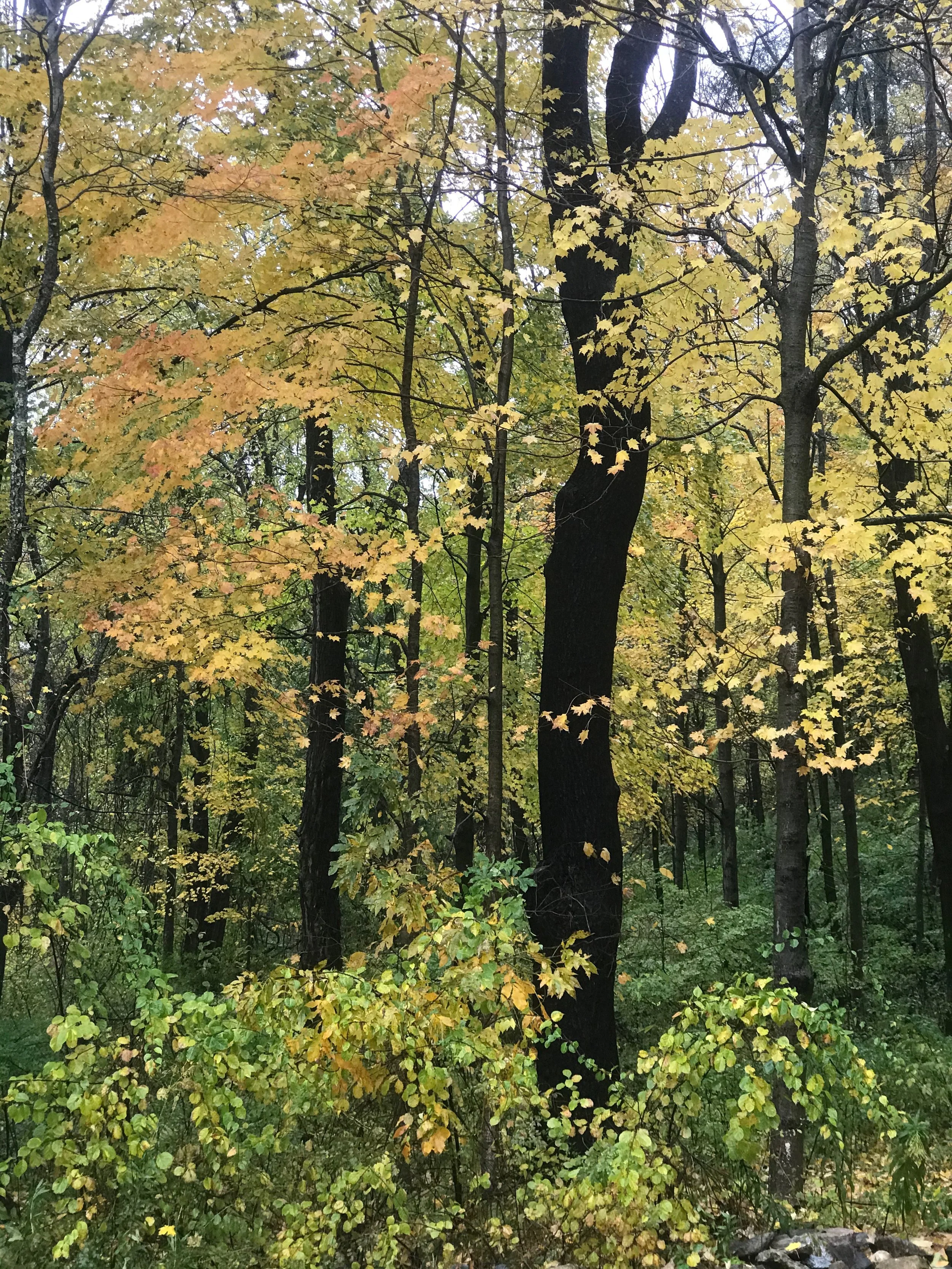would you look at that

One million zillion years ago, when my children were tiny, they each in their turn went to a magical little Waldorf nursery school on a tiny farm in the woods. Everything about this place seemed completely made-up, even at the time, so I’m aware that describing it has an implausible ring. I’m pretty sure it was real.
The first day that my firstborn attended school there, we arrived to find the calico-clad teacher sitting in a tiny clearing with a spotted newborn fawn nestled in a pile of warm towels on her lap. She said that the farm dog, Amos, had spent the early morning trying to draw some human attention to the woods, barking and prancing back and forth from the house to the little babbling brook that twinkled through the forest behind it, and finally in frustration darted into the trees himself and carried the tiny, soaking wet fawn out in his mouth. It was so lucky, the teacher remarked, that she had a load of towels just finishing up in the dryer and could wrap it up nice and snug. I don’t remember how they returned the fawn to woodland life, where it no doubt opened a violin academy for squirrels and still dances with trailing silks in the dawn mist, but I do remember feeling like any hesitation about the first day of nursery school on the part of anyone of any age was basically erased by arriving to the sight of this. I also don’t know if anyone had jitters resurfacing on the second day, because the little farm cow obligingly chose the dawn of that morning to deliver a perfect and healthy heifer calf that was wobbling to its feet as we all arrived for drop-off, and from that point on everyone was pretty much all in.
In the summer time, the teeny tiny school became a teeny tiny day camp, and each four-day week of camp had a lovely, reassuring arc with its Monday bowl of millet and Tuesday apple crisp, et cetera, plus the continuous thread of a new, not-very-well-kept-secret art project that they worked on all week like a little band of elves, until the big reveal at dismissal time on Thursday, the last day of the week.
When my second daughter was in school and camp there, it came to pass that one of the moms died completely unexpectedly one mid-week summer morning. As parents we learned of the death in an anguished flurry of phone calls after drop-off. In an epic instance of teamwork, we all brave-facedly picked the little children up at the regular time and shuffled them to our cars, knowing full well in our heavy, frightened hearts that the little child most deeply affected by this event was also going home to be informed.
My girls were 5 and 9 at the time, and that evening when we gathered them close to tell them, I could see my older child register the grief that awaited the bereaved daughter, and right on the heels of that, the broader implications about the safe, millet-on-Monday world she had lived in up to that point. It seemed I was watching the fact of universal mortality settle over her consciousness. In the same moment, her little sister, developmentally safe from meta-awareness of this type, made an irritated little puff. “Well!” she said with an exasperated huffy gesture, “now her mom won’t ever see the tie-dyed shirt!” On Monday they had tied white t-shirts in little knots; on Tuesday, dipped them in the dye; just that morning, as we were activating the phone tree, they had rinsed them and hung them out to dry, to be ready to show the parents at dismissal the next day.
I’ve always thought of this as a pretty clear illustration of developmental differences. In broad terms, a five year old definitely looks at loss in a different way than a nine year old does. But my little one’s simple observation has a resonance for me which transcends the absolute value of that truth.
The last ten years have been a complicated hopscotch of loss in my life. In that span, I’ve also learned and gained and experienced and born witness to some beautiful, happy things. Loss is definitely hard. And it’s also a job of work to process the normal-course-of-life things, and the joyful things even, when many of the people I looked to in my life are not present to share in them, not there to clap eyes on the tie-dyed shirt. We grow into the ability to cogitate and rationalize about the natural cycles of life and loss, nearness and separation. We age a bit and can zero in on what we carry forward from our time with anyone who’s no longer by our sides. A little maturity allows us to presume high opinions or imagine empathic commiserations, but at some level we’re all still five years old, looking for a little gasp from one corner of the audience when we trot out in the shirt.
Spoiler alert! I haven’t solved this. It just seems like a good idea to remember none of us really outgrows that hunger for comfort and stability, not even the person who cut you off in traffic or loudly pointed out that you have 16 items in your basket there in the ‘15 items or less’ line. Here’s to empathy and the ability to see each other’s tiny, tender, aggrieved child. Here’s to the memory of Amos the very good dog, a hero among first responders. Here’s to the genuine wisdom of bringing rhythm to our days; it’s a grounding type of comfort to offer to that kernel child within, and so easy to lose hold of in busy lives.
If you came here hungry, please trot over to Rural Intelligence, where I’m posting new edible content every two weeks.
